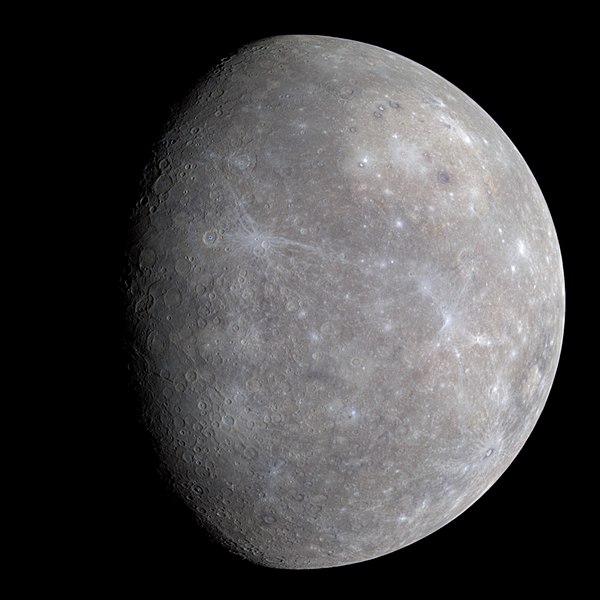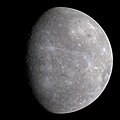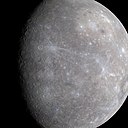Afaylu:Mercury in color - Prockter07-edit1.jpg
Aller à la navigation
Aller à la recherche

Aksay n uẓṛi ad :600×600 piksil Tibuda yaḍnin:240×240 piksil | 480×480 piksil | 768×768 piksil | 1 024×1 024 piksil | 1 950×1 950 piksil
Afaylu anṣli (1 950 × 1 950 piksil, tiddi n ufaylu: 734 kio, anaw MIME: image/jpeg)
Amzruy n ufaylu
Adr i usakud/akud ad tẓrt afaylu mk lli tt inn ikka ɣ tizi ann.
| Asakud/Akud | Tawlaft mẓẓin | Imnadn | Asmras | Axfawal | |
|---|---|---|---|---|---|
| amiran | 3 Yunyu 2008 à 16:12 |  | 1 950 × 1 950 (734 kio) | Jjron | {{Information |Description={{Information |Description=Full color image of from first MESSENGER flyby |Source=NASA/JPL [http://messenger.jhuapl.edu/gallery/sciencePhotos/image.php?page=1&gallery_id=2&image_id=143] |Date=2008-01-30 |Author=NASA/[ |
Asmrs n ufaylu
tasna ad iḍfarn gis afaylu ad:
Aswuri aɣzuran n ufaylu
Id wiki ad ar swurin s ufaylu ad:
- Asmrs ɣ ar.wikipedia.org
- المجموعة الشمسية
- عطارد
- كوكب
- بوابة:المجموعة الشمسية/مقالة متميزة
- ويكيبيديا:صور مختارة/الفضاء والكون/نظرة إلى الأعلى
- بوابة:علم الفلك/صورة مختارة
- ويكيبيديا:ترشيحات الصور المختارة/عطارد بالألوان
- ويكيبيديا:صورة اليوم المختارة/يناير 2018
- قالب:صورة اليوم المختارة/2018-01-13
- بوابة:علم الفلك/صورة مختارة/52
- بوابة:المجموعة الشمسية/مقالة متميزة/3
- ويكيبيديا:صورة اليوم المختارة/أغسطس 2021
- بوابة:كواكب
- بوابة:كواكب/كوكب مختار
- قالب:صورة اليوم المختارة/2021-08-24
- بوابة:كواكب/كوكب مختار/2
- Asmrs ɣ ary.wikipedia.org
- Asmrs ɣ arz.wikipedia.org
- Asmrs ɣ ast.wikipedia.org
- Asmrs ɣ as.wikipedia.org
- Asmrs ɣ azb.wikipedia.org
- Asmrs ɣ az.wikipedia.org
- Merkuri (planet)
- Planet
- Vikipediya:Həftənin seçilmiş məqaləsi/oktyabr 2016
- Vikipediya:Həftənin seçilmiş məqaləsi/42. Həftə 2016
- Portal:Günəş sistemi/Seçilmiş məqalə
- Portal:Günəş sistemi
- Vikipediya:Həftənin seçilmiş məqaləsi/sentyabr 2017
- Vikipediya:Həftənin seçilmiş məqaləsi/36. Həftə 2017
- Vikipediya:Həftənin seçilmiş məqaləsi/yanvar 2018
- Vikipediya:Həftənin seçilmiş məqaləsi/5. Həftə 2018
- Asmrs ɣ ba.wikipedia.org
- Asmrs ɣ bcl.wikipedia.org
- Asmrs ɣ beta.wikiversity.org
- Asmrs ɣ be.wikipedia.org
- Asmrs ɣ bh.wikipedia.org
- Asmrs ɣ ca.wikipedia.org
- Asmrs ɣ ca.wikinews.org
- Asmrs ɣ ckb.wikipedia.org
- Asmrs ɣ cr.wikipedia.org
- Asmrs ɣ cs.wikipedia.org
Ẓruggar f ussmrs amatay n ufaylu ad.



